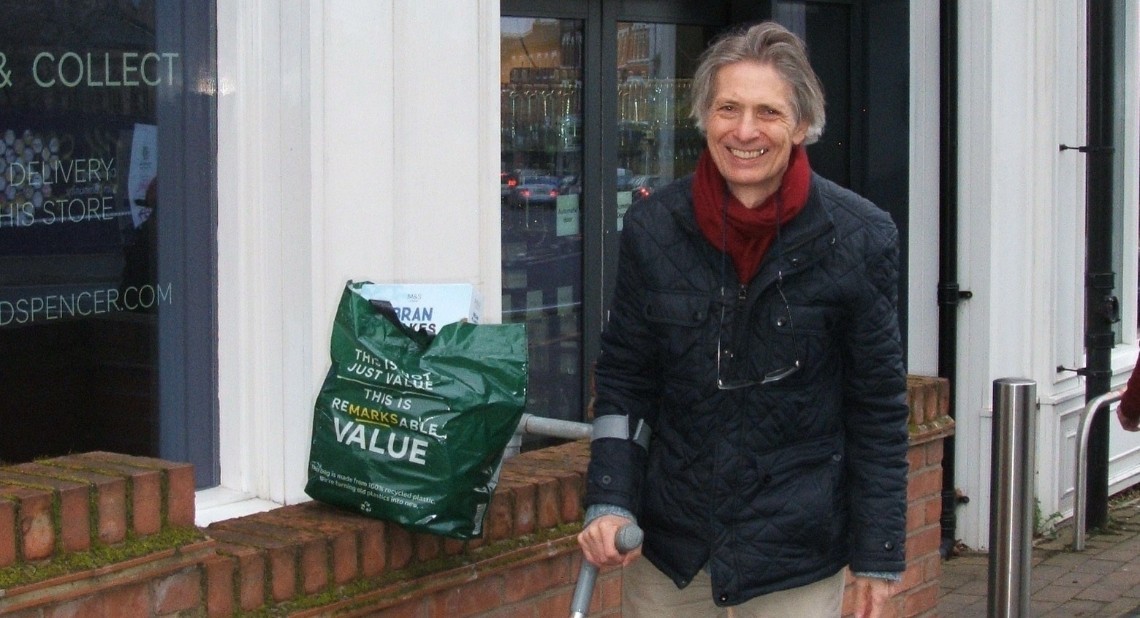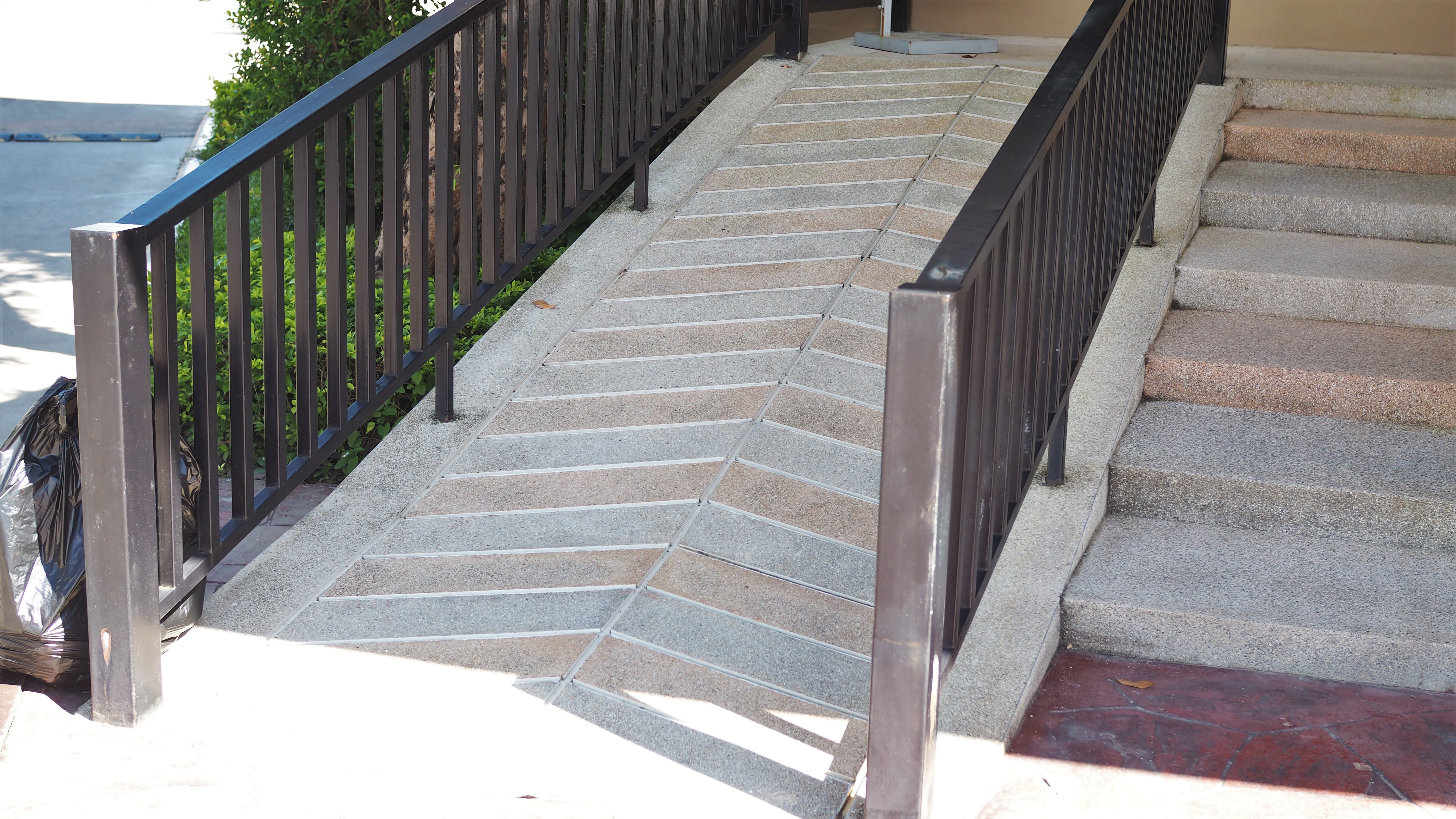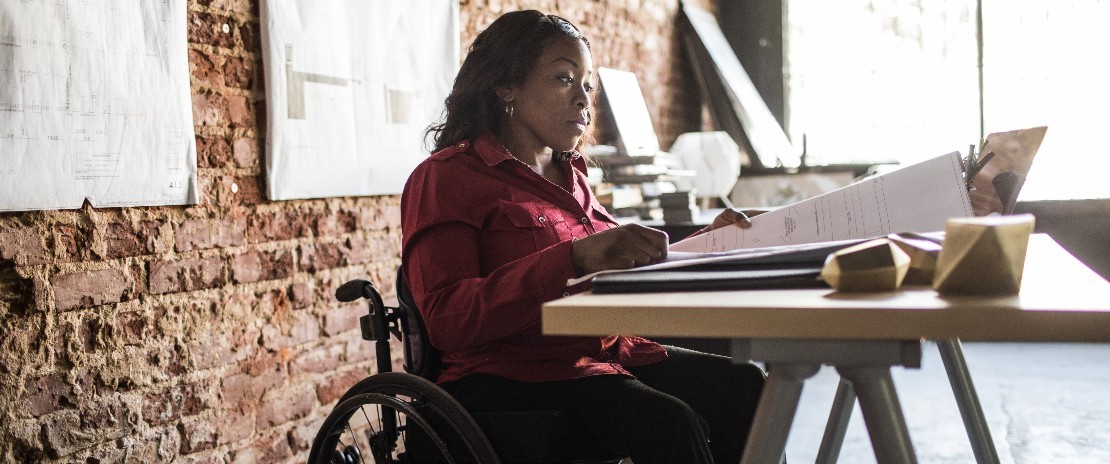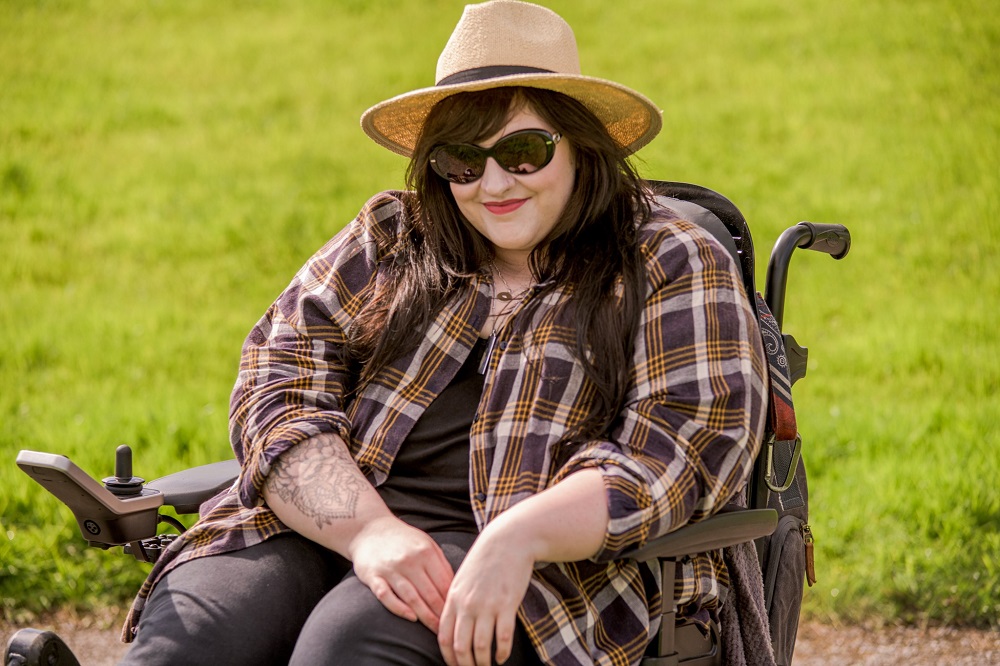In 2004, laws were introduced to make shopping and leisure activities more accessible for disabled people. So, how much has changed in the past 20 years? Disability journalist, Ian Cook, looks back at the wins and challenges so far.
Twenty years ago, in 2004, the world changed for disabled people like me who like to drive to the local shopping centre, visit large stores, cafes, and restaurants, and go to the movies.
A new rule introduced under the 1995 Disability Discrimination Act came into force. Large shops, cafes, and other large retail outlets had to change “physical features” which usually made it impossible or unreasonably difficult for disabled people like me to get inside and around.
What changes were made?
In simple terms, big retailers had to consider introducing level access and step-free entry for shoppers who use a wheelchair, mobility scooter, or, like me, a rollator. They also had to consider lowering light switches, door handles, or shelves for shorter people.
These changes applied where it was “reasonable” for businesses to make them. They only applied where the businesses were big, like a supermarket, restaurant, or coffee shop chain. In legal terms, changes had to be affordable and practical “reasonable adjustments”.
When I drove to my local shopping centre after 2004, I noticed large retailers were not only fulfilling their new legal duties but were also waking up to the purchasing power of us disabled shoppers, called the “purple pound”. Stores started following the new rules not just because they had to, but because it made smart business sense, as outlined by the Business Disability Forum. Those purple pounds (money from disabled customers) were rolling in.
Big stores like ASDA used innovations like “disabled mystery shoppers” to test how accessible their shops actually were. This made front-page news for retailer magazines like “The Grocer”. I know this because I wrote the story back in May 2004. And that’s not all. The sunflower lanyard scheme for shoppers with hidden disabilities was rolled out, in-store quiet or quieter hours were introduced, and assisted shops and changing-place toilets were everywhere.
Twenty years later, I wrote another article for The Grocer. Instead of complaining about lack of access or help, I wrote about the inconvenient habit of supermarkets constantly rearranging products on shelves, which is known as “re-setting.” Writing about this instead of more significant issues such as lack of access or help shows how things have progressed in the past 20 years.
The triumphs in 20 years
Twenty years after these changes were introduced and then incorporated mainly into Section 20 of the 2010 Equality Act, it is incredible how much has been achieved.
Big businesses are working to make things accessible, and they need to keep going on this path. In 2016, a disability group called Purple was set up to bring disabled people and businesses together. In 2019, Purple conducted a survey that found things had changed for the better, although retailers needed to keep on driving change. On a positive note, the survey found that the retail industry was the most accessible sector.
More than half of those surveyed (56 percent) agreed that proper training would help staff understand different disabilities and serve them better. These changes would encourage disabled customers to spend more disposable income, estimated at £274 billion annually.
Additionally, the Motability Scheme has significantly improved the shopping experience for disabled customers by providing accessible solutions to move around in stores and shops. The all-inclusive lease package through the Scheme provides an extra layer of support for people to feel confident when they visit shops as it reduces the stress of transportation concerns.
The challenges
Although the Purple survey highlighted the progress made, it also showed a need to go faster in several areas. It found:
- Approximately four in five disabled customers thought businesses could do more to make their stores accessible
- 75 percent of disabled people said that they had been obliged to leave a store or website in the past, as they were unable to finish a purchase because of a lack of accessibility
- More than three-quarters of disabled young people between the ages of 16-24 said they found it difficult to shop in person or online due to their disability on several occasions.
The survey confirmed that we are far from the end of the journey to accessibility. Since 2018, Purple Tuesday has been held annually to promote accessibility and inclusivity for disabled consumers.
While much has been achieved in the 20 years since the 2004 duties came into place, more needs to be done. With improved accessible retail facilities, we would have the opportunity to freely spend our ‘purple pounds’.
Interested in joining the Scheme?
The Motability Scheme offers an all-inclusive package. If you are in receipt of a qualifying mobility allowance you can use it to lease a car, scooter, powered wheelchair, or Wheelchair Accessible Vehicle (WAV).
Related articles
How does PIP work? All your questions answered
Chloe Tear: “My first guide dog Dezzie changed my life”
How to access disabled parking concessions across the UK
![]()









